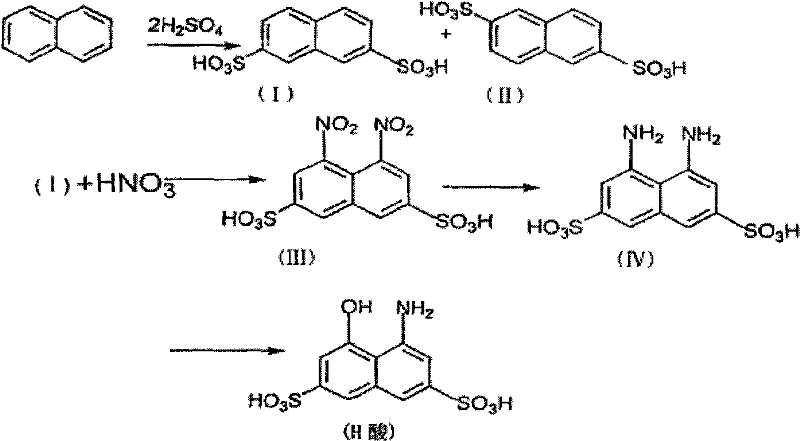Method for treating waste water of H-acid production
A technology for the production of waste water and treatment methods, applied in the directions of heating water/sewage treatment, neutralized water/sewage treatment, ion exchange water/sewage treatment, etc. Governance problems and other problems, to achieve the effects of comprehensive utilization, easy desorption and regeneration, and easy mastery of technology
- Summary
- Abstract
- Description
- Claims
- Application Information
AI Technical Summary
Problems solved by technology
Method used
Image
Examples
Embodiment Construction
[0023] Below further illustrate the present invention by embodiment:
[0024] Pack 10mL of D301 macroporous weakly basic styrene-based anion exchange resin into a glass column (Φ20×300mm) with an insulating jacket. Take 70mL of H-acid production wastewater and cool it to room temperature, adjust the pH value to about 3, and pass through the resin column at room temperature (25°C) at a flow rate of 20mL / H. After neutralization treatment, it can reach the national secondary emission standard. The temperature of the D301 resin after adsorption is 55±5°C, and the desorbent combination is 1BV8%NaOH+2BV4%NaOH+2BVH 2 O 40mL for desorption regeneration, the flow rate is 10mL / H. The resin regenerated by desorption is reused. The desorption rate of 1-amino-8-naphthol-3,6-disulfonic acid (H-acid) was 96%. After the desorption solution (40mL) is distilled to 30mL, the recovered water can continue to be used as a desorption agent. After the distillation residual liquid is cooled, 1-am...
PUM
 Login to View More
Login to View More Abstract
Description
Claims
Application Information
 Login to View More
Login to View More - R&D
- Intellectual Property
- Life Sciences
- Materials
- Tech Scout
- Unparalleled Data Quality
- Higher Quality Content
- 60% Fewer Hallucinations
Browse by: Latest US Patents, China's latest patents, Technical Efficacy Thesaurus, Application Domain, Technology Topic, Popular Technical Reports.
© 2025 PatSnap. All rights reserved.Legal|Privacy policy|Modern Slavery Act Transparency Statement|Sitemap|About US| Contact US: help@patsnap.com



